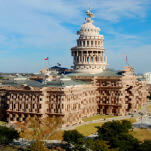Inside the Mattel-Hasbro Corporate Brawl Over Who Gets to Make Disney Princess Dolls
LatestWanna see a fever-pitch corporate brawl? Let the rights to a franchise like the Disney princesses go up for grabs.
The cover story for this month’s Bloomberg Businessweek takes a good look at the rising fortunes of Hasbro, culminating in their seizure of the rights to make Disney princess dolls from the Barbie-powered house of Mattel. The piece is entertaining for the inclusion of lines like, “I said, we’re not going to close the FunLab, we’re going to use it to build back our own brands.” We’re not going to close the FunLab!
However, it’s also a fascinating glimpse at how almost everybody girl-adjacent found themselves neck-deep in sparkles, ruffles, and pink, as well as what to expect from the franchise in the future.
-

-

-

-

-

-

-

-

-

-

-

-

-

-

-

-

-

-

-

-

-

-

-

-

-

-

-

-

-

-

-

-

-

-

-

-

-

-

-

-








































